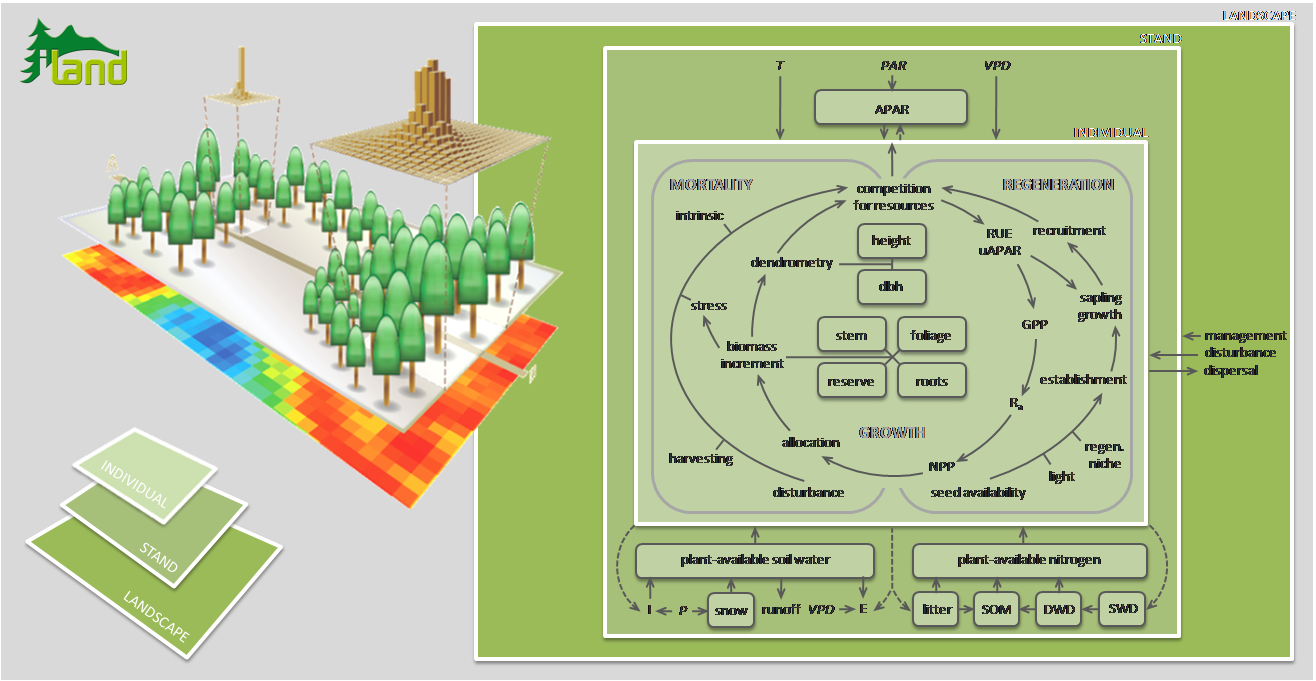Methods
RESIN uses a multi-method approach, harnessing methodology and data from dendroecology, terrestrial forest inventory, and remote sensing to improve our understanding of the past, present, and future of disturbance regimes in Central Europe.

Dendroecology, the analysis of the information contained in tree rings, will be used to gain insights into past disturbance regimes. Based on dendroecology we will characterize the historical range of variation as a baseline against which current and potential future changes can be assessed.
Remote sensing, i.e., the study of the environment from airborne or satellite-based sensors, will provide a detailed characterization of the patterns and extent of recent forest disturbances.
Terrestrial inventory data, i.e., measurements of relevant ecosystem characteristics obtained in the field, will complement remotely sensed information with regard to characteristics of forest structure and composition, and allow a detailed understanding on disturbance impact and recovery.
The methodological linchpin of the approach is ecosystem modeling. We will use process-based simulation modeling to synthesize the different empirical data sources, and generate consistent trajectories of past and future disturbance dynamics. The model applied is iLand, the individual-based forest landscape and disturbance model. More information on iLand can be found here.

Simulation modeling will allow us to quantify disturbance impacts on important ecosystem services, and consistently assess trade-offs between individual disturbance effects. Furthermore, simulation modeling enables the investigation of alternative scenarios of future climate change, and the assessment of their impacts on disturbance regimes and ecosystem trajectories. Finally, alternative forest management measures will be implemented in silico, and will be evaluated with regard to their benefits and drawbacks under changing climate and disturbance regimes.